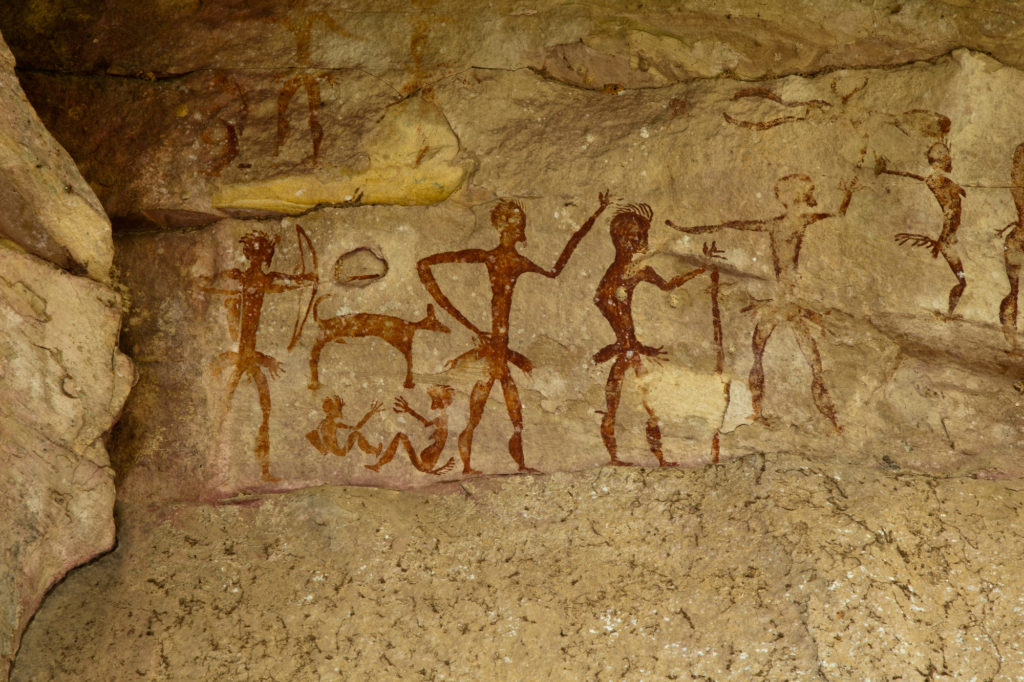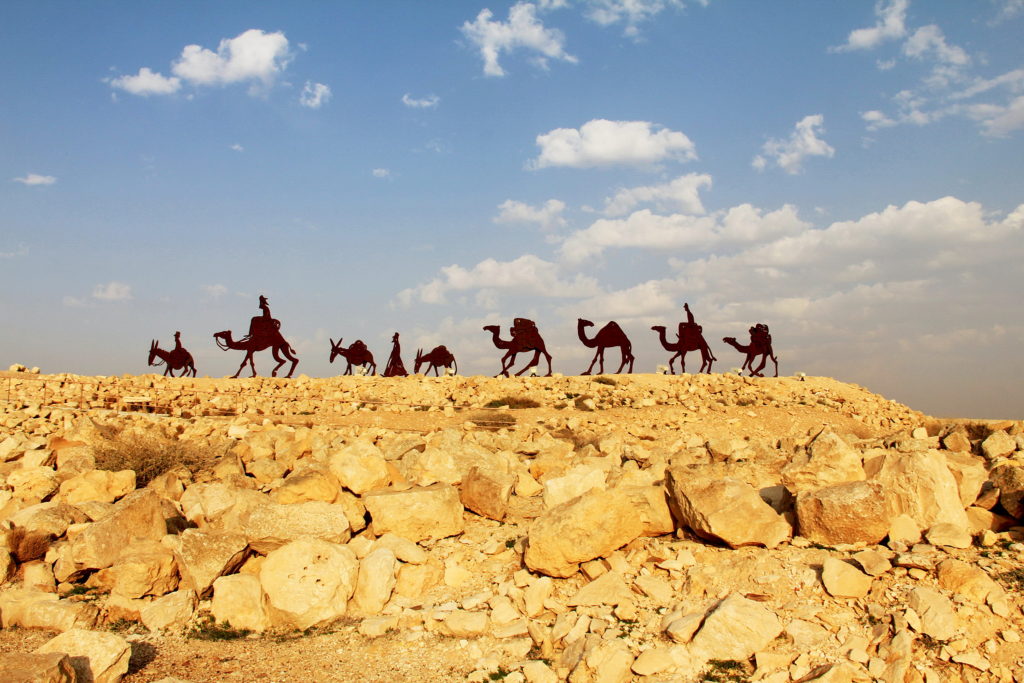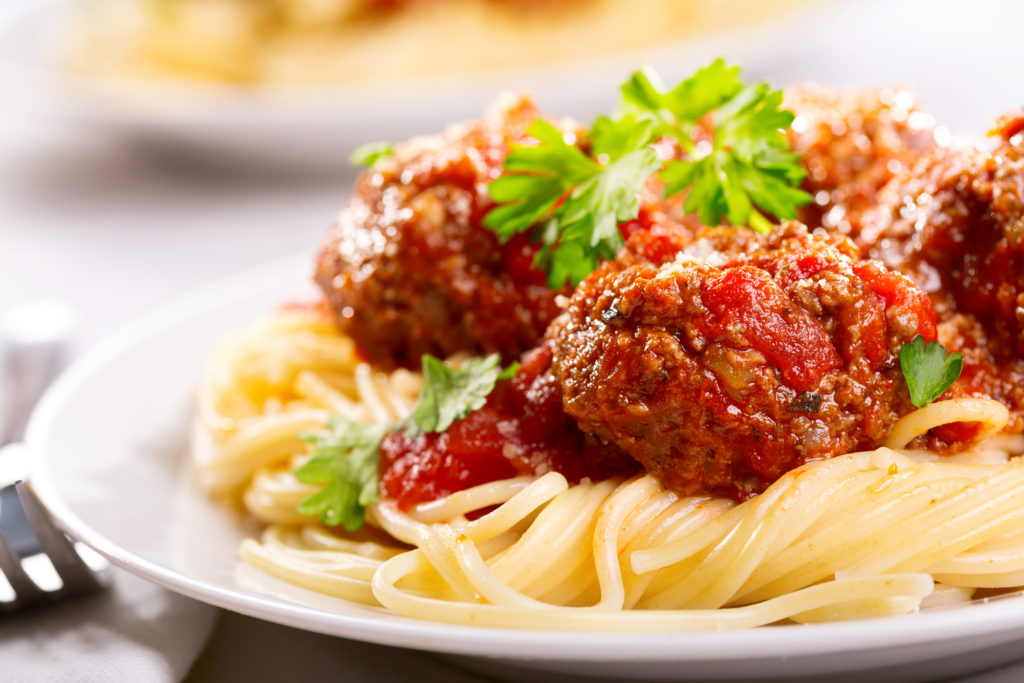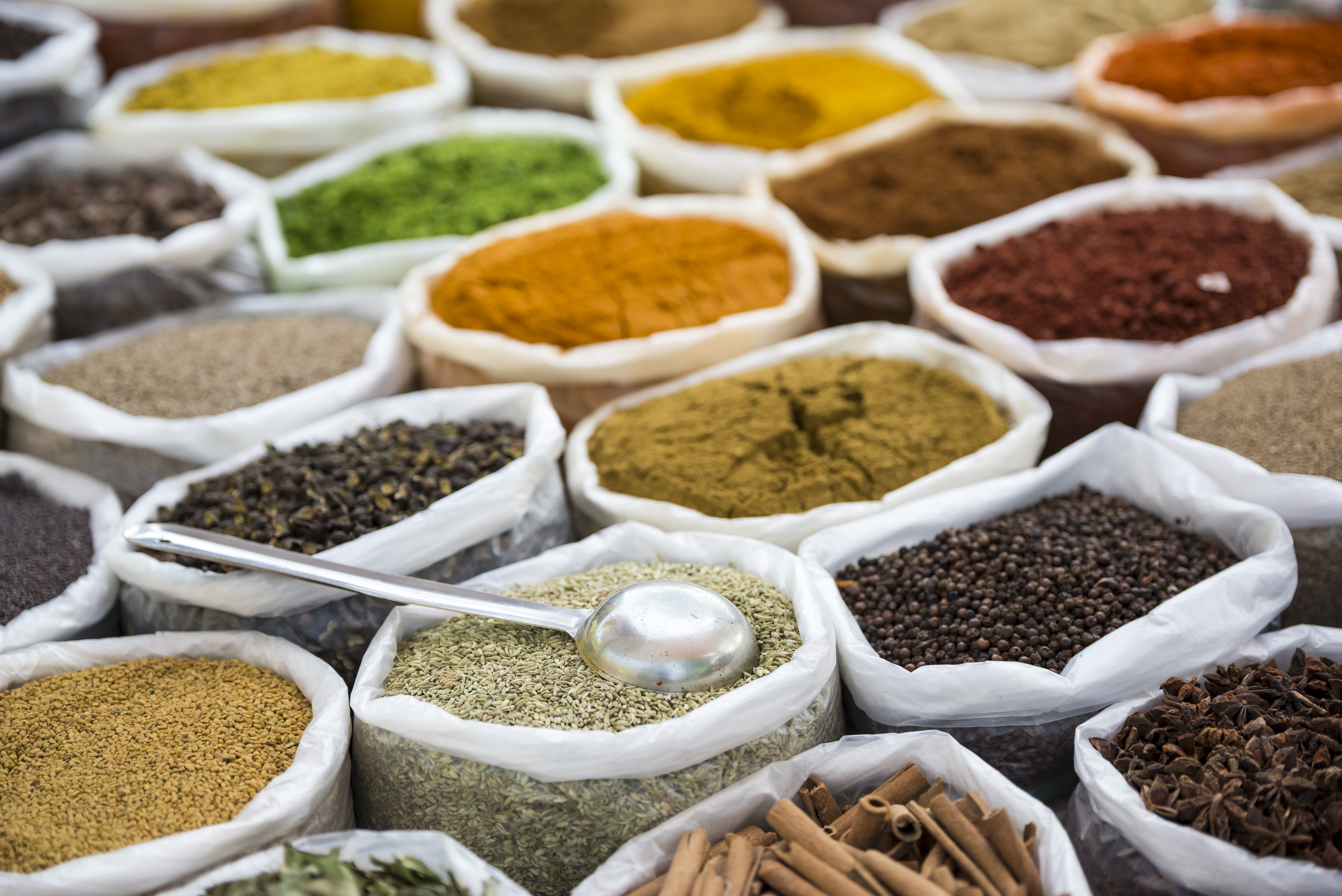The Passion for Spices – A New Phenomenon or An Age – Old Quest?
During a recent conversation with a friend of mine, the topic of spices came up (as it often does in my world). My friend mused that it seemed the popularity (and price) of spices had increased greatly with the abundance of cooking shows on television now. And while I have to admit there are probably more food-related shows than I have socks (and I love socks!), their impact on the demand for and price of spices is an interesting topic to think about.
Spices have been written about, fought over, and at the center of trade deals for many centuries (legend has it that Manhattan was traded to the English by the Netherlands for the small island of Run, which was covered in nutmeg trees). So, are we just noticing a popularity that has always been there, or is this a new phenomenon? Or, like bell bottoms and leg warmers, is the popularity of spices cyclical and in an upswing right now?
Spicy Spelunking
A very simplified definition of spice is the seed, fruit, bark or root of a plant, primarily used for flavoring, coloring, or preserving food; while herbs are defined as the leaves, flowers, or stems of plants (there are a lot of versions of these definitions and a lot of overlap with the end products). But for my purposes here I am including both herbs and spices, as well as the oils and aromatics from these plants.
 Archaeological findings suggest that long before any written historical recordings, early hunters and gatherers wrapped food in the leaves from certain bushes, and added berries, nuts, and seeds to enhance the taste. Historians believe some of the oldest cave drawings depict the use of plants for enhancing foods. Imagine the dinner conversation the very first time cave wife served cave husband a steak with berries and nuts…a discussion still heard around dinner tables today! It would certainly have given him something to draw about.
Archaeological findings suggest that long before any written historical recordings, early hunters and gatherers wrapped food in the leaves from certain bushes, and added berries, nuts, and seeds to enhance the taste. Historians believe some of the oldest cave drawings depict the use of plants for enhancing foods. Imagine the dinner conversation the very first time cave wife served cave husband a steak with berries and nuts…a discussion still heard around dinner tables today! It would certainly have given him something to draw about.
Ancient Papyri from Egypt circa 1555 BC listed many spices, such as coriander, fennel, cumin, garlic and thyme, as health promoting, and it’s said that laborers ate garlic and onion to promote health and vitality. Ancient Chinese scholars also discussed the medicinal use of herbs and spices in early writings. The list of civilizations documenting the use of spices thousands of years ago is long, from Ancient Mesopotamia and India, to Greece and Rome. There are even references in both the Koran and the Bible to spices used as oils, aromatics, and medicines. When Queen Sheba visited King Solomon, the bible says she offered him gold, many spices, and precious stones, and Joseph was sold into slavery by his brothers to spice merchants (something we probably all thought about doing to our siblings once or twice!).
From the Silk Road to the High Seas
 The Silk Road, an ancient network of trade routes that connected Asia with the Middle East and southern Europe from around the 2nd century BC to the 1400s, was named such because the major trade product was…silk! But many spices and oils were also traded, including opium (no wonder it was so profitable!). For hundreds of years, trading mostly came from Arabia, and traders kept the source of the spices a secret, so they would have a monopoly on the spice trade. The cost of certain spices was crazy high (wicked high for my friends in New England), especially in Europe where they were mainly used by the wealthy (the only ones who could afford them). Cost per pound of spices like saffron, cinnamon, ginger and mace were as much as a head of livestock. Peppercorns were even used as a substitute for money, accepted to pay taxes, tolls and rent (picture the look on the face of modern landlord handed a bag of peppercorns!).
The Silk Road, an ancient network of trade routes that connected Asia with the Middle East and southern Europe from around the 2nd century BC to the 1400s, was named such because the major trade product was…silk! But many spices and oils were also traded, including opium (no wonder it was so profitable!). For hundreds of years, trading mostly came from Arabia, and traders kept the source of the spices a secret, so they would have a monopoly on the spice trade. The cost of certain spices was crazy high (wicked high for my friends in New England), especially in Europe where they were mainly used by the wealthy (the only ones who could afford them). Cost per pound of spices like saffron, cinnamon, ginger and mace were as much as a head of livestock. Peppercorns were even used as a substitute for money, accepted to pay taxes, tolls and rent (picture the look on the face of modern landlord handed a bag of peppercorns!).
Eventually, other countries started looking for ways to get to the source of these high-demand spices, including by sea instead of the dangerous overland routes. Marco Polo talked about spices in his travel memoirs; when Columbus made his famous voyage, he was trying to find a new route to the Indies but instead reached what is now the Bahamas; and Vasco da Gama discovered the Cape Route from Europe to the Indian Ocean around the Cape of Good Hope. This sea exploration helped break up the monopoly on the spice trade. It also eventually set in motion another page in our spicy history…the age of Buccaneering.
 Aye, while Pirates had been a scourge on the high seas for many years, the war over trade, including the spice trade, gave the Buccaneers of the Caribbean a sort of hero status for a while. For the English, and later the French and Dutch, the buccaneers (or privateers as they liked to be called) were a cheap way to fight their enemies…mostly Spain. They would attack the Spanish merchant ships, split the booty, and strike a blow for the country footing the bill. These pirates were feared and paid little attention to the laws they were sailing under the protection of. Eventually, as the power of Spain waned, the buccaneers’ attacks began to disrupt all merchant trade, and they became criminals once again in the eyes of the powers that be. Arrrrgh!
Aye, while Pirates had been a scourge on the high seas for many years, the war over trade, including the spice trade, gave the Buccaneers of the Caribbean a sort of hero status for a while. For the English, and later the French and Dutch, the buccaneers (or privateers as they liked to be called) were a cheap way to fight their enemies…mostly Spain. They would attack the Spanish merchant ships, split the booty, and strike a blow for the country footing the bill. These pirates were feared and paid little attention to the laws they were sailing under the protection of. Eventually, as the power of Spain waned, the buccaneers’ attacks began to disrupt all merchant trade, and they became criminals once again in the eyes of the powers that be. Arrrrgh!
By the 1800s, the United States became a player in the spice trade as well, bartering its wares (meats, vegetables, fish, etc.) for spices such as pepper, cinnamon, nutmeg, and ginger, and it was a prosperous endeavor until the time of the Civil War.
As you can see, spices have been an important commodity for many millennia. Their history has been one of power and wealth, war and control. But does understanding this history help us find our answer about today’s popularity?
Mama Mia, Thatsa Spicy Meataballa!
 Have popular cooking shows increased the demand (and therefore the price) of spices? I do believe, if nothing else, these shows have increased our knowledge of spices, and our openness to trying new things. Upward growth trends within the spice and seasonings markets in the past several years can be found in both the exotic spice area (flavorings used in dishes from other countries) and in the hot spice profiles (think peppers) – which is probably due in part to recipes seen on television and the internet. Another growing trend? Organic spices…most likely a direct correlation to the clean eating movement.
Have popular cooking shows increased the demand (and therefore the price) of spices? I do believe, if nothing else, these shows have increased our knowledge of spices, and our openness to trying new things. Upward growth trends within the spice and seasonings markets in the past several years can be found in both the exotic spice area (flavorings used in dishes from other countries) and in the hot spice profiles (think peppers) – which is probably due in part to recipes seen on television and the internet. Another growing trend? Organic spices…most likely a direct correlation to the clean eating movement.
So, the answer to my friend’s question? It’s kind of like “how many licks does it take to get to the Tootsie Roll center of a Tootsie Pop?” …we may never really know. But one thing’s for certain, there’s never been a better time to embrace the spice, make everything you cook more delicious, and explore other cultures right in your own kitchen! Don’t be afraid to shake it on, stir it in, or garnish the top with the exquisite flavors all around you. You will be so happy you did!
“Adventure is worthwhile in itself.” Amelia Earhart
Until next time, don’t forget to add A Slice of Spice to your everyday.

